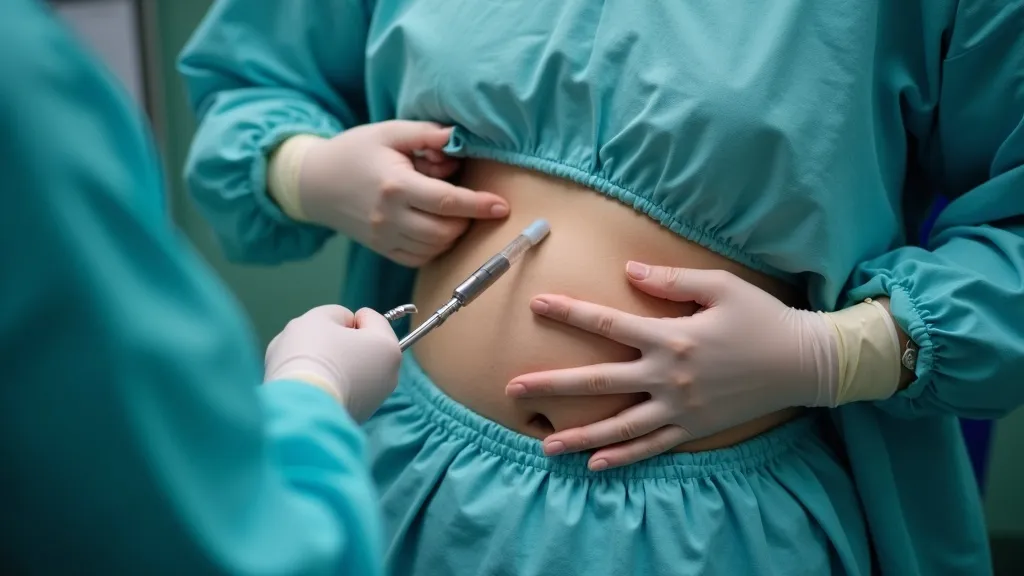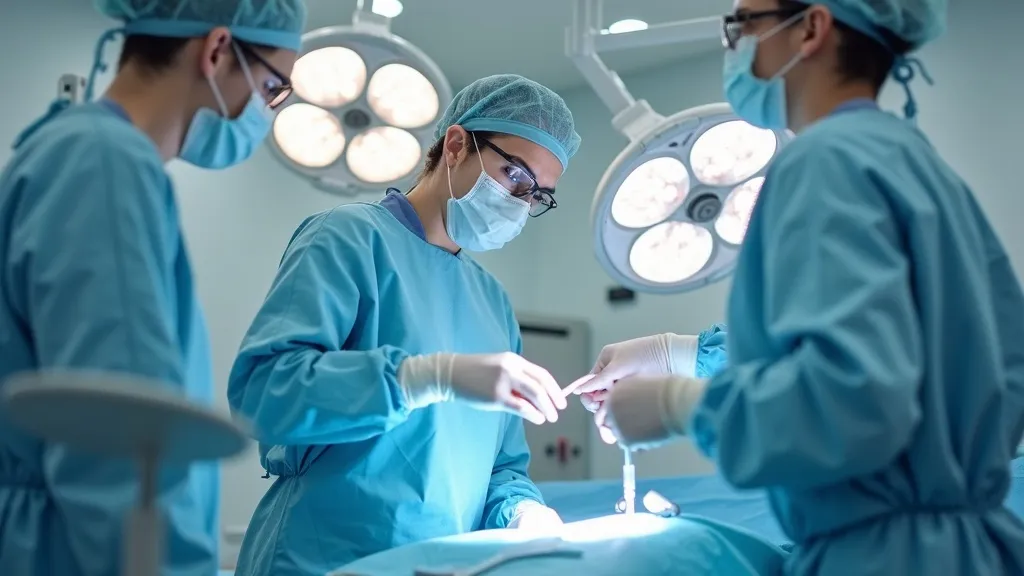Understanding Abdominoplasty and Liposuction
Abdominoplasty and liposuction are popular cosmetic procedures aimed at enhancing body contour. Abdominoplasty, also known as a tummy tuck, focuses on removing excess skin and fat, and tightening abdominal muscles, while liposuction targets stubborn fat deposits in various body areas. Together, they offer comprehensive body reshaping options for individuals seeking aesthetic improvements.

Introduction to Abdominoplasty and Liposuction
In the realm of cosmetic surgery, abdominoplasty and liposuction stand out as two of the most sought-after procedures for body contouring. While both aim to enhance the body’s shape and appearance, they employ different methods and techniques to achieve their goals. Understanding the nuances of each procedure can help potential patients make informed decisions about their body transformation journey. These surgical interventions have gained popularity not only for their aesthetic outcomes but also for the psychological benefits they can provide, boosting self-esteem and improving quality of life. Patients often explore these options after significant lifestyle changes, such as weight loss or pregnancy, leading to a desire for a more defined body shape.
What is Abdominoplasty?
Abdominoplasty, commonly referred to as a tummy tuck, is a surgical procedure designed to remove excess skin and fat from the abdomen while also tightening the underlying muscles. This operation is particularly beneficial for individuals who have experienced significant weight loss or those who have undergone multiple pregnancies, leading to loose and sagging skin. By addressing both the skin and muscle layers, abdominoplasty provides a firmer and smoother abdominal profile. The procedure not only enhances physical appearance but can also improve abdominal function by repairing separated muscles, which is especially common in women post-pregnancy.
The standard abdominoplasty procedure typically involves making a horizontal incision just above the pubic area, allowing the surgeon to remove excess skin and fat. The abdominal muscles are then sutured together, creating a tighter and more toned look. In some cases, a mini-abdominoplasty may be recommended for those with less excess skin, which requires a smaller incision and offers a shorter recovery time. The results of an abdominoplasty can be transformative, leading to a more youthful and aesthetic midsection that patients often find exhilarating.
Understanding Liposuction
Liposuction, on the other hand, is a minimally invasive procedure aimed at removing localized fat deposits that are resistant to diet and exercise. Unlike abdominoplasty, liposuction does not address skin laxity or muscle tone; instead, it focuses on reshaping specific areas of the body such as the thighs, hips, buttocks, and arms. By utilizing a suction technique, liposuction can effectively reduce fat volume, resulting in a more contoured and streamlined appearance. This procedure is particularly popular among individuals who are close to their ideal weight but struggle with stubborn fat pockets that refuse to diminish despite efforts in diet and fitness.
During a liposuction procedure, small incisions are made in the targeted areas, and a thin tube called a cannula is inserted to break up and suction out the fat. There are several techniques of liposuction, including tumescent liposuction, where a saline solution is injected into the fat before removal, and laser-assisted liposuction, which uses laser energy to liquefy fat for easier removal. Each method has its advantages, and the choice of technique can depend on the patient’s specific goals and the areas being treated. Liposuction can be an effective solution for enhancing body contours and achieving a more balanced silhouette.
Combining Abdominoplasty and Liposuction
For many patients, a combination of abdominoplasty and liposuction offers a comprehensive approach to body contouring. By integrating both procedures, surgeons can simultaneously address excess fat and skin, providing a more holistic transformation. This combination is particularly effective for individuals seeking significant changes in their body aesthetics, as it allows for a complete rejuvenation of the torso area. Patients often find that combining these procedures leads to a more balanced and harmonious appearance, as both excess skin and stubborn fat are dealt with in one surgical session.
Surgeons may recommend this combined approach for patients who have lost a considerable amount of weight and now have both loose skin and localized fat deposits. By removing the skin and fat together, patients can achieve dramatic results that are not possible with either procedure alone. However, it is essential for patients to have realistic expectations and understand that the recovery process may be longer due to the combined nature of the surgeries. Proper planning, including pre-operative assessments and post-operative care, is crucial to ensure optimal outcomes and minimize complications.
Procedure Details and Recovery
Both abdominoplasty and liposuction require careful planning and consultation with a qualified surgeon. The procedures are typically performed under general anesthesia and may require several hours, depending on the extent of the work being done. Recovery times can vary; however, patients should expect a few weeks of downtime to allow for proper healing. Adherence to post-operative care instructions is crucial for optimal results and minimizing complications.
Following an abdominoplasty, patients can expect some swelling and discomfort, which can be managed with prescribed pain medications. It is advisable for patients to take time off work, typically ranging from two to four weeks, depending on the nature of their job and individual healing. Gentle movements and light walking are encouraged shortly after surgery to promote circulation and reduce the risk of blood clots. Patients are advised to wear a compression garment to support their healing abdomen and minimize swelling.
In the case of liposuction, recovery may be quicker, with most patients returning to work within a week. However, similar swelling and bruising can occur, and maintaining a healthy lifestyle post-surgery is vital for sustaining results. Patients are encouraged to engage in light activities and avoid strenuous exercise for several weeks, allowing the body to heal properly. Ultimately, the success of both procedures relies heavily on patient commitment to following post-operative guidelines and maintaining a balanced lifestyle.
Cost Considerations
The cost of abdominoplasty and liposuction can vary significantly based on factors such as the surgeon's expertise, geographic location, and the complexity of the procedure. It is important for individuals to have a clear understanding of all associated costs, including hospital fees, anesthesia, and post-operative care, to avoid any unexpected financial burdens. On average, the cost of abdominoplasty can range from $6,000 to $12,000, while liposuction may range from $2,000 to $7,000 per area treated.
Many cosmetic surgery clinics offer financing options to help patients manage the cost of their procedures. Additionally, it is crucial to consider the long-term costs associated with maintaining results, including lifestyle changes and potential future procedures. Patients should also keep in mind that most health insurance plans do not cover cosmetic surgery, so thorough financial planning and discussions with the surgical team are essential before proceeding.
FAQs
Q: Is abdominoplasty suitable for weight loss?
A: Abdominoplasty is not a weight loss procedure; it is a body contouring surgery intended to remove excess skin and improve muscle tone. Candidates for abdominoplasty should ideally be at or near their target weight for the best results.
Q: Can liposuction be performed on any part of the body?
A: Liposuction is versatile and can be performed on various body parts, including the abdomen, thighs, arms, and neck, but the suitability depends on individual circumstances. Surgeons assess each patient's unique needs before recommending the best approach.
Q: How long do the results of these procedures last?
A: Results are generally long-lasting, provided that the patient maintains a stable weight and follows a healthy lifestyle. Weight fluctuations can impact the outcome, so it is essential to adopt a balanced diet and regular exercise routine post-surgery.
Q: Are there any risks associated with these procedures?
A: As with any surgical procedure, there are risks, including infection, scarring, and anesthesia complications. Choosing a qualified surgeon can help mitigate these risks. It is crucial for patients to discuss their medical history and any concerns during the consultation process.
Q: Will there be visible scarring after surgery?
A: Both abdominoplasty and liposuction can result in some scarring, but skilled surgeons work to minimize visible scars by placing incisions in less noticeable areas. Scars can fade over time and can often be concealed with clothing.
Q: How can I prepare for these procedures?
A: Preparation involves a thorough consultation with your surgeon, where you will discuss your goals, medical history, and expectations. Patients are often advised to stop smoking, avoid certain medications, and arrange for post-operative care and support.
Conclusion
Abdominoplasty and liposuction offer powerful solutions for individuals seeking to enhance their body contours. By understanding the distinct benefits and considerations of each procedure, patients can make informed decisions in consultation with their healthcare providers. Ultimately, the choice to undergo cosmetic surgery is deeply personal and should be made with careful consideration of the desired outcomes and potential risks. Patients are encouraged to conduct thorough research, ask questions, and take their time in deciding whether these procedures align with their personal goals and values.
Furthermore, it is beneficial for individuals to connect with others who have undergone similar procedures to gain insights and support. Online forums, support groups, and consultations with previous patients can provide valuable perspectives on the recovery process and overall satisfaction. Awareness of the emotional journey accompanying cosmetic surgery is equally important, as it can significantly influence a patient’s experience and satisfaction with their results. By fostering a supportive environment and encouraging open communication, patients can navigate their body contouring journeys with confidence and clarity.
As societal standards of beauty continue to evolve, the demand for procedures like abdominoplasty and liposuction is likely to grow. However, it is paramount that prospective patients prioritize their health and well-being above all else. Surgery should not be viewed as a quick fix but rather as a part of a larger commitment to a healthier lifestyle. As such, maintaining realistic expectations and understanding the importance of ongoing care and self-love are essential components of the cosmetic surgery journey.








